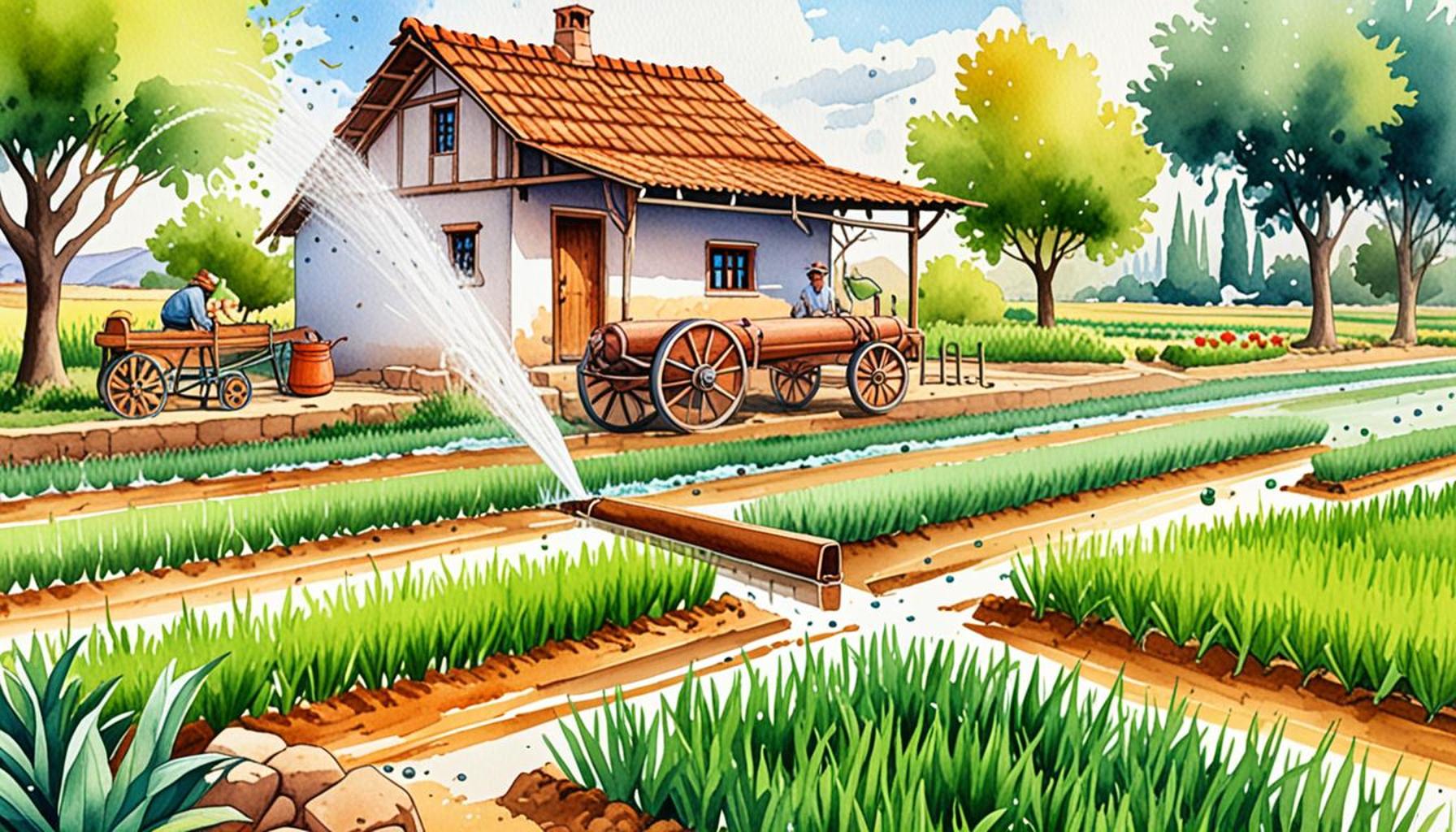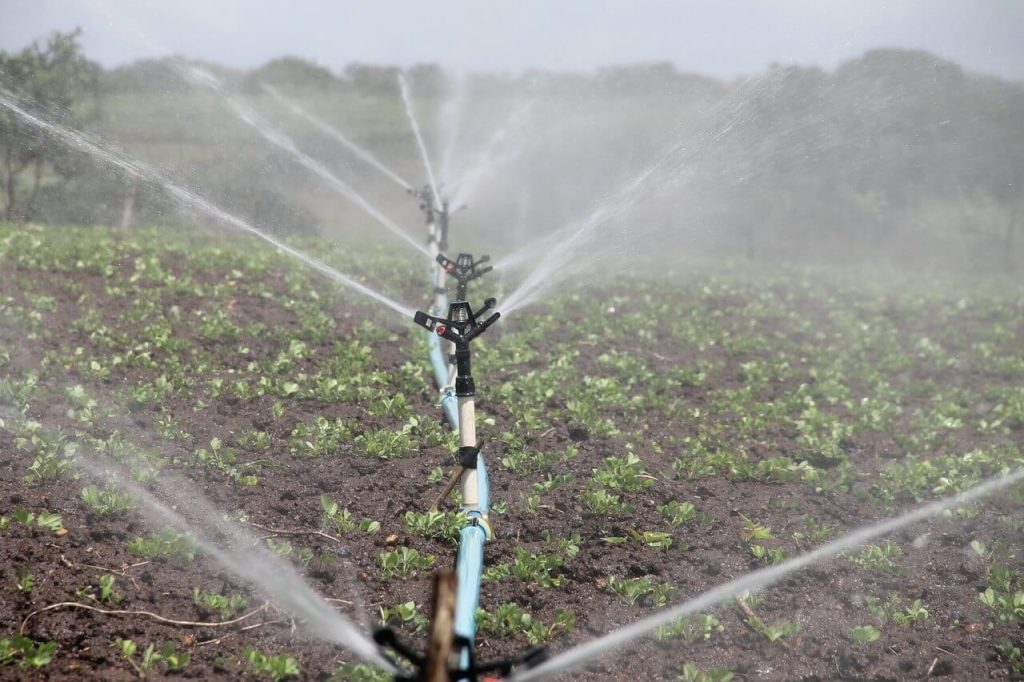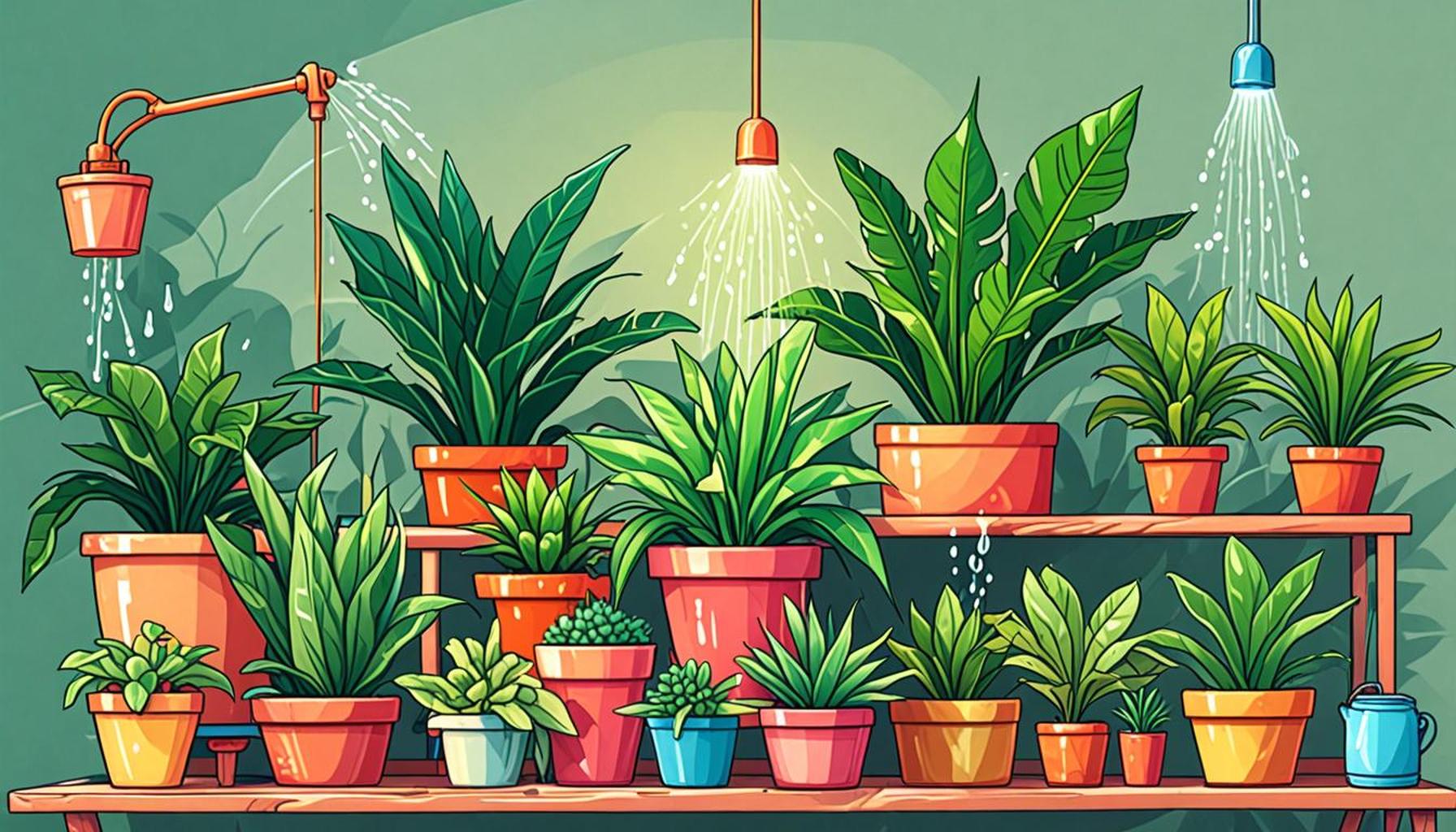Traditional Irrigation Methods: What Worked Over the Centuries

Understanding Traditional Irrigation Techniques
Across the globe, traditional irrigation methods have proven their resilience, adapting to varied cultures and environments. These techniques have stood the test of time, demonstrating their effectiveness in agriculture and water management. Today, understanding these age-old systems provides crucial insights into sustainable practices that can support modern farming.
Many traditional irrigation techniques have been refined over centuries, combining local knowledge and environmental considerations. They represent an intricate dance between humans and their surrounding ecosystems. As we note the growing challenges posed by climate change and increasingly inconsistent rainfall patterns, revisiting these methods is not just a nod to the past but a practical pathway towards sustainable agriculture.
Here are a few key features of traditional irrigation methods:
- Canals and Ditches: These structures are fundamental in channeling water from rivers and lakes to agricultural fields. For example, in the arid regions of the American Southwest, the Hohokam people engineered complex canal systems that not only diverted water but also regulated its flow, feeding thousands of acres of crops reliant on the delicate balance of water supply.
- Terracing: In mountainous or hilly regions, terracing is employed to create flat areas for farming while preventing soil erosion. The Inca civilization in South America is a prime example; they built extensive terraced fields in the Andean mountains over 500 years ago, allowing them to cultivate diverse crops from corn to potatoes while adapting to steep slopes.
- Flooding: This method, often utilized in rice cultivation, involves intentionally flooding fields to sustain crops. The practice is especially prominent in Southeast Asia and can be traced back to ancient civilizations in China, where the paddy fields showcase an intricate understanding of water management, ensuring crop yield even in vulnerable environments.
In the United States, farmers are increasingly recognizing the value of these traditional techniques against the backdrop of modern agricultural pressures. For instance, some organic and sustainable farms are implementing flooding strategies similar to those used in ancient rice paddies to improve soil health and minimize reliance on chemical fertilizers. Additionally, many ranchers in the Western states are reviving canal and ditch systems to maximize water efficiency, featuring adaptive strategies that reflect both traditional wisdom and contemporary agricultural science.
As we delve deeper, we will explore specific examples from various cultures and consider their relevance today. Each traditional method highlights a unique relationship between humans and their environment, demonstrating the successful management of water resources over centuries. From the ancient techniques of channeling water to modern applications of terracing and sustainable practices, these methods prove invaluable in addressing today’s agricultural challenges.

DISCOVER MORE: Click here to learn about the benefits of native plants
Time-Tested Techniques that Shaped Agriculture
Throughout history, diverse cultures have cultivated a rich array of traditional irrigation methods, each uniquely attuned to their specific environmental contexts. These time-tested techniques have not only supported food production but also fostered communal cooperation and environmental stewardship. Understanding these practices further reveals their relevance in today’s agricultural landscape, where water scarcity and sustainability are paramount.
One of the most significant traditional irrigation techniques is flood irrigation. This method involves applying water to crops by flooding the fields, facilitating the absorption of moisture directly into the soil. Historically, this practice has been predominant in regions such as the Yangtze River Valley in China, where rice paddies thrive under controlled flooding. Farmers in these areas have perfected the timing and depth of water application to optimize yields and reduce water waste, significantly contributing to their food security.
While flood irrigation works well in rice cultivation, other methods have adapted to specific geographic challenges. The ancient civilizations of the Middle East are renowned for their sophisticated qanat systems. These underground channels transport mountain spring water to arid plains for agriculture. By utilizing gravitational flow, qanats minimize evaporation losses and ensure a steady water supply, serving as a crucial resource in drought-prone areas. Such ingenuity exemplifies the deep understanding these cultures had of their environment and water management.
Another notable technique is wells and spring diversion. Across many regions, including the vast vineyards of California and small-scale farms in the Midwest, farmers have utilized shallow wells to tap into groundwater resources. By directing this water towards crops, they can maintain lush, productive fields even during dry spells. This age-old practice not only supports crop growth but also preserves the ecosystem surrounding these water sources.
In addition to these techniques, drip irrigation is gaining traction as a modern adaptation of traditional principles. Originating from ancient practices, this method involves delivering water directly to the root zones of plants, minimizing evaporation and runoff. Farmers are increasingly turning to drip irrigation in the arid regions of the Southwest U.S., where water conservation is critical. By making effective use of limited resources, this technique extends the wisdom of ancient cultures into sustainable farming practices today.
As we reflect on these traditional irrigation methods, it is clear they encompass more than mere agricultural techniques; they embody an enduring relationship between communities and their environments. By exploring the principles behind these methods, we can glean valuable insights to inspire contemporary practices. In a world grappling with climate change and water scarcity, revisiting these age-old systems may provide the sustainable solutions we seek in modern agriculture.
Traditional Irrigation Methods: Exploring the Time-Tested Techniques
As we delve into the world of traditional irrigation methods, it’s essential to highlight the methodologies that have survived through generations. These ancient techniques reflect a deep understanding of local ecosystems, climate variations, and water conservation principles. Cultures across the globe have adopted unique approaches, each with distinctive merits that enhanced agricultural productivity.One fascinating method is the flood irrigation employed in ancient Mesopotamia. Farmers directed river water onto their fields, taking advantage of seasonal floods. This method proved effective for growing staple crops such as barley and wheat, serving agricultural societies for centuries due to its simplicity and cost-effectiveness.Another significant traditional technique is the qanat system, developed in arid regions to tap into underground aquifers. This method involves digging a series of underground tunnels to transport water from a higher elevation to agricultural areas. Its design not only conserves water but also reduces evaporation losses, showcasing a brilliant adaptation to challenging environments.A standout among traditional practices is terracing, particularly prevalent in hilly terrains. By creating flat areas on slopes, farmers could effectively manage water runoff. This method minimizes soil erosion and helps retain moisture, allowing for the cultivation of crops in areas that would otherwise be unsuitable for farming.The zhi cultivational approach, notable in ancient China, incorporates natural water bodies into agricultural practices. Farmers constructed canals to distribute river water, ensuring that rice paddies remain inundated, optimizing growth cycles and increasing yields. Traditional irrigation methods not only highlight historical agricultural practices but also provide valuable insights into sustainable water management solutions as we face modern challenges such as climate change and population growth. Understanding these techniques can inspire contemporary agricultural practices, ensuring the longevity of food production systems. As our exploration continues, let’s now examine the advantages of these time-tested irrigation techniques through a comparative analysis table.
| Category | Advantages |
|---|---|
| Flood Irrigation | Utilizes natural water flow, reducing labor costs and enhancing soil fertility. |
| Qanat System | Conserves water efficiently by minimizing evaporation and tapping into underground sources. |
| Terracing | Prevents soil erosion and improves moisture retention in sloped areas. |
| Zhi Cultivational Approach | Maximizes water efficiency for rice cultivation, aligning with local climatic conditions. |
This table encapsulates the key advantages of various traditional irrigation methods, each contributing to sustainable agricultural practices that have withstood the test of time. As we further discuss these techniques, we can draw lessons applicable to modern water management and farming.
DISCOVER MORE: Click here for essential pest control tips
Innovative Adaptations for Diverse Terrains
As agriculture expanded across continents, communities encountered diverse landscapes that demanded innovative adaptations in their irrigation practices. One such method that emerged as a response to rocky and uneven terrains is terracing. This ancient practice, particularly prominent in regions such as the Andes Mountains in South America and the Philippines, involves transforming steep hillsides into a series of flat, level surfaces, or terraces. By constructing stone walls to hold soil in place, farmers can create manageable plots that minimize soil erosion while maximizing arable land. The careful management of water flow on these terraces not only enhances crop yields but also prevents runoff and fosters sustainable land use.
Equally fascinating is the waterwheel, a technology that has roots in ancient Greece and later found its way to various parts of the world, including the United States. These mechanical devices harness the natural flow of rivers or streams to lift water efficiently for irrigation. The waterwheel has enabled farmers in areas with fluctuating water levels to maintain a consistent supply, particularly in regions like Virginia and North Carolina, where both historical and modern adaptations continue to support local agriculture. This continuous cycle of water elevation underscores an early understanding of renewable resources and mechanical efficacy.
Another noteworthy traditional irrigation technique, particularly in the drylands of the Middle East and North Africa, is the foggara system. This ancient method utilizes a network of underground tunnels similar to the qanats but specifically designed for capturing and distributing water from seasonal floods. By managing surface water runoff through these subterranean channels, farmers create a reliable irrigation source for crops in areas where rainfall can be both scarce and erratic. The foresight of these communities in developing such systems speaks volumes about their commitment to sustainable water use.
In stark contrast to underground methods, the sivil system of Spain offers a unique example of surface irrigation techniques. Historically utilized in the Valencia region, this method involves the careful construction of embankments to direct and spread river water across fields. Farmers rely on gravity to ensure an even distribution of water, promoting effective irrigation. The communal cooperation involved in maintaining these systems fosters a sense of unity among farmers, as they collectively manage the local water resources that are vital to their agricultural practices.
Moreover, the use of mulching as a watering technique has gained popularity in recent years, particularly among organic farmers across the United States. By covering the soil surface with organic materials, such as straw or wood chips, farmers can effectively retain soil moisture, reduce evaporation, and suppress weed growth. This approach, rooted in ancient practices, highlights how traditional knowledge can be employed in modern farming strategies to achieve environmental sustainability.
As we explore these ancient irrigation systems, we uncover a legacy of adaptation and ingenuity that reflects humanity’s enduring quest for bountiful harvests. Each method provides insight into the cultural heritage and ecological understanding of the communities that crafted them, reminding us of the critical balance between agricultural practices and environmental care. The lessons embedded in these systems may hold the key to navigating the challenges of water scarcity and climate change we face today. By understanding and integrating these traditional irrigation methods, modern agriculture can create a more sustainable and resilient future.
DISCOVER MORE: Click here to uncover homemade pest capture techniques
Conclusion
Throughout history, traditional irrigation methods have illustrated the profound relationship between agriculture and sustainable water management. From the intricate foggara systems of the Middle East to the ingenious terracing techniques of the Andes, these methods showcase how communities adapted to their unique environments with remarkable ingenuity. Each approach not only reflects a deep understanding of local ecosystems but also reveals the social structures and cultural values that have shaped agricultural practices for centuries.
As we face contemporary challenges such as water scarcity, climate change, and increasing food demand, the relevance of these traditional techniques becomes ever more significant. Modern farmers can benefit from integrating these time-tested irrigation strategies into their practices, allowing for advanced water conservation while enhancing crop resilience. For instance, the adoption of mulching and communal efforts akin to the sivil system can foster collaboration among farmers and bolster community sustainability efforts.
Looking ahead, revisiting these traditional methods invites a holistic perspective on agricultural practices that honors the past while paving the way for a sustainable future. As we delve deeper into the rich heritage of irrigation techniques, we equip ourselves with valuable insights that can inform contemporary agricultural solutions. Investigating how these age-old practices can blend with modern technology might just hold the answer to optimizing resource use in an increasingly unpredictable world, fostering a balance between productivity and environmental stewardship for generations to come.


